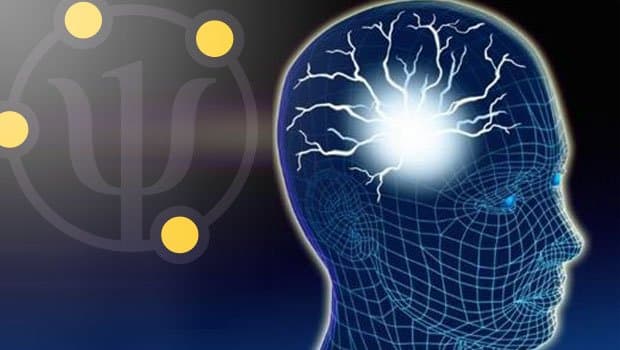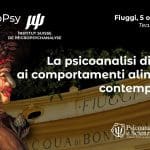The progress in informatics is a fascinating phenomenon, which deserves to be studied from different angles rather than the usual points of view. Firstly, an affirmation that can seem banal: with informatics the human being has become the “creator” of standardized minds. At the cybernetic origins, the functions that a computer could perform were somewhat simple. Nowadays, computers have highly sophisticated functions in a vast applicative field: we can say that from the primitive mind, the minds of the elaborators have passed to an advanced psychic state in which they are able to execute, in an extremely fast way, repetitive tasks and apply several variables predefined by the “creator”.
Whoever uses a computer in an intensive way for his profession, understands the problems caused by the progressive updating of the operative system and of the applicative software, in other words, the minds which make the elaborators function. With each release of the new version of software we find out that the documents written by the old minds are no longer useable, except with the use of a translator that works in the background, of which we are not aware, which translates the old information into new.
Here is, for example, how a document (storage of memory) could appear seen by the new mind, supposing that it is able to trace and visualize the document if it does not use the translator of which it is endowed:
click on the icon to visualize the example –>
The more we study Freud the more we understand how vast was the variety of interest in his mind. I didn’t believe, though, that the Master was also a cybernetic “ante litteram” (before his time), until I became interested in a rigorous study of the repression concept by Freud when I discovered that, initially, Freud approached the repression concept through the formalization of his “theory of forgetting”, which we could define cybernetic.
In a letter sent to his friend and colleague Wilhelm Fliess on the 6th December 1896, he reveals in a complete manner this theory, speaking about the hypothesis that the psychic apparatus has been formed through a stratification process which took place in the consecutive development period limited by the transcription phases of the psychic contents.
During the course of life, phases of psychobiological development exist within which we express ourselves using a particular type of language; for instance, the unweaned baby already has expressive codes through which it express its tensions, its emotions, requests and desires.
These codes will be substituted in the following phases by others, which are more adequate and structured and will take the place of the former, provoking the loss of connections.
“Small islands” could remain though, from the previous phase written in the old language and therefore active but unrecognizable since they are written in a language in which the codes have been lost: this is exactly what happens in the process of development of the informatics code, therefore, a computer which uses a modern operating system will not be able to recognize, read or utilize information memorized with obsolete codes unless suitable translators are installed.
click on the icon to visualize the example –>
The Master writes: “I would like to underline the fact that the following transcriptions represent the psychic realization of the subsequent phases of life. The translation of the psychic material should occur on the border between two of such phases.
I explain the specific characteristics of the psychoneurosis to myself, supposing that the translation of one part of the material hasn’t occurred, which would imply determinate consequences… Each ulterior transcription inhibits the previous one and takes from it the excitatory process.
Where the new transcription is lacking, the excitation will occur according to the psychobiological laws, which were valid in the previous psychic period and along the pathways, which were then available. We find ourselves in front of an anachronism: in a particular province… we are in the presence of the survivals from the past. An unsuccessful translation is what we call “repression”. 1
Freud had observed close connections between the actual symptomatic and the forgotten past and through this theory of the non-translation of codes, he had attempted to find an explanation for the phenomenon.
But very soon he was no longer satisfied with a linguistic explanation and he searched for a structural explanation. Only in 1915, with the publication of the article “The repression” (Die Verdrängung) he formulated the concept of repression, which would then be elaborated for almost a decade (Inhibition, symptom and anxiety, 1926) until arriving at the final concept: there would be a first part of the process called “primal repression”, which wouldn’t regard the instinct in itself, but its “ideational representatives” that would not have access to the consciousness and which would tie the instinct to themselves.
Allow me to make an example: in a breastfeeding baby the innate need of nutrition, the sucking reflex and the grasp reflex exist: all these things lead us to believe that there are instinctual activities which, in a manner of speaking, “push” the baby towards the grasp and eat activity, in a undifferentiated way.
The baby grasps something (for example the maternal breast), taking it to its mouth, it feeds itself, the need placates and the tension within the mental system nullifies itself.
But on a psychic level the pressure-information to grasp remains: it is nice to grasp. Even when the feeling of satiety has taken place, the baby exerts the grasping and sucking activity, since evidently, such an activity is sustained by the pleasure principle.
It can occur that the activity of grasping and eating can incur prohibitions and the traffic light of incompatibility turns red: No! You can’t eat this!
The desire to grasp-eat is blocked there and then: it is the repression.
The ideational representative of the inhibited action is blocked immediately but it continues to be fuelled by the energy drive: in this way a first unconscious nucleus is created which functions as an agglutinant nucleus upon similar elements to be removed.
If the action of grasping and eating cannot be exerted, not only is it not performed, but also the inhibition itself of “thinking of doing it”, takes place. But that desire has, however, been activated, it cannot be cancelled, it remains in the unconscious and becomes the source of the instinct itself, since the drive cathexis remains connected to it. The desire has not reached the consciousness and it has not been transformed into an action, since an inhibitory anticathexis has been generated which has blocked it on the spot. But the energetic activity of the primary process loads it continuously, it has become the source of the instinct: it is continuously waiting to be satisfied.
If its cathexis is strong enough, it will deform the ego defences, managing in one-way or another to show itself: this is the symptom, a compromise between the achievement of the primal instinctual pressure and the mechanisms of defence.
To remain with the example used, the adult, heir of that child, will not become a cannibal, but he might devour his own nails in a compulsive manner, using the defensive mechanism of the introjection of the aggressiveness.
In the last years Nicola Peluffo has progressively formulated what we could define an epistemological vision of the somatopsychic conflict, harmonising the genetic epistemology by Piaget with the psychology of repression by Freud.
Peluffo reminds us, starting with Freud, that during the course of life, psychobiological development phases exist within which the information, the reactions and the storage, utilize expression codes and operative modalities which are then abandoned: if this doesn’t happen the structuring of severe psychopathologic syndromes will appear.
Peluffo’s thesis is that in the adult, beside a Cartesian explanation system, other types exist in conflict with it, which appear for example, in dreams.
The sets of vestigial represent the essence of the so-called complexes and are in conflict with the ego.
The bases of such complexes are unconscious and therefore exist out of spacetime and continue to manifest themselves unceasingly. They are the so-called repressed phylogenetic and continue to fuel the repressed individual: this is why the primitive of the phylogenetic prehistory and the infant of the individual prehistory continues to exist.
I’m going to use an example taken from a case of infant observation.
A lively child of the age of three or four years, who we will call Sofia, is walking beside her mother in a park, the father follows the two ladies of the family at close distance.
Skipping, suddenly Sofia trips over a stone and falls to the ground scraping her hands.
She gets up furious and shouts like a possessed child: “Naughty daddy, naughty daddy!”
The logical explanations offered by the parents to free the father from blame, are of no avail.
The child calms down only after the physiological expulsion of the aggression provoked by the trauma. Sofia, thanks to the painful encounter with the frustrations of life, has shortly renounced to the infantile omnipotence state, she has come out of the foetus-maternal symbiosis and has allowed a new entity to enter into her representational universe: the Omnipotent Father, the Deus exmachina, the Demiurge, The One with which all is possible and decides all, an imago upon which she has projected all of the omnipotence which she has had to renounce.
If this code island should remain whole and shall not be re-elaborated with the integration of the successive information, which they will tell Sofia, that even her father is a twig within the universe, this minuscule piece of archaic software could become hypertrophic up to the structuring of a delusion of persecution: my life is in the hands of Satan or of God, which is the same thing, I am the pawn of the Eternal, and so on…
Another example, socially painful and very common, is that of the psychogenic sterility: biologically healthy women, without any pathology that impedes the performance of the reproductive function, who receive healthy sperm from their natural donors, for many years are unable to succeed in their desire for a pregnancy.
Very often the analysis shows that the Oedipal incestuous infantile desire to be impregnated by the father, has remained unaltered in the unconscious: if the desire to be impregnated were to beachieved, the young child would be torn to pieces by the alien, which is growing inside her.
The representation of herself and her own reproductive apparatus has remained still at those infantile memorizations of the cloaca type typical of the first infancy: they are women who ignore the existence of the vagina, even if they go to the gynaecologist for periodic check ups.
Lets go back to our parallelisms between human mental functioning and cybernetic structures.
Many experts of cybernetic like to affirm, “The human mind is structured as a computer”. It seems to me to be a very particular way to proceed. It would probably be better to say that man has architected in a conscious, preconscious and unconscious way the computers on the basis of the structure of his mind. We know how great a part the projection in the human inventive has.
To proceed in the illustration of the topic we must first give ourselves an operative definition of the computer.
Is it possible to give a mathematical definition adequate for the general computer concept, a definition that is able to embrace all the possible examples of computers, which are feasible today and tomorrow with any kind of technology? The definition of “Turing machines” has been the answer to this question: In 1936 the English mathematician Alan Turing proposed the idea of an imaginary machine that would be able to perform every kind of calculation with numbers and symbols.
The Turing machines are an ideal mathematical model, which embraces all the possible examples of computers. The components of a Turing machine are very simple: a support of memorization upon which data can be written, a simple tape, potentially infinitive; this tape is divided into cells and the computation happens by moving itself onto this tape, having the possibility to read what is written in the cells and to write or cancel symbols, thus passing through different states of memory. The machine analyzes the tape, one cell at a time, starting from the cell, which contains a blank symbol furthest to the left of the tape.
In the illustrations which follow you can see a visual example of a Turing machine: in the first, my imaginary creation and in the second a java simulator.
click on the icon to visualize the first illustration –>
click on the icon to visualize the second illustration –>
The tape head for reading and writing is a device that at a certain instant points at a single cell of the tape and carries out the software instruction. It has a limited number of conditions. It can read the symbols from the tape and basing itself on that symbol and on the actual state, it can rewrite another symbol on the current symbol, it can change the actual state and move itself to the left or right of a cell on the tape. As you can see there is a representation very similar to Freud’s quotation, which I mentioned earlier: it is comforting to see how “great minds think alike”.
The Turing machine usually carries out the instructions in the order in which they are inserted.
Those who frequently use computers in their daily routine know that they are provided with extremely fast minds but without creativity: nowadays a computer cannot carry out anything which is not already coded into its operative system, programmed by human beings. Furthermore the computer cannot learn from experience (at least not at the moment).
It is believed that the striking differences of performance between the human mind and the computer are given to the fact that computers are obliged to the deterministic binary logic: true/false, while the human mind contemplates vague or approximate concepts, which allow almost an infinitive number of solutions.
The thing, which makes the human mind incomparable, is what we could define its capability of quantum reasoning: the coexistence of states deterministically in opposition and of different times, the possibility of not contemplating the principle of contradiction, etc. in other words the modalities of functioning specific to the primary process the way they were described by Freud.
To allow the computer performances to reach that of the human mind scientists have been working for years to create the so called “quantum computers”. The quantum computer concept was first introduced in the ‘80s by the great American physicist Richard Feynman, Nobel Prize winner for physics. The fundamental characteristic of these computers, still in a phase of theoretic elaboration, consists in the fact that they would allow very complicated and very powerful forms of parallelism. The possibility of parallel calculus procedures is founded on an central idea of the quantum mechanics, which is the idea of overlapping of quantum states.
In the application to computers and computations, the elements of quantum states overlap give way to parallel branches of computation; therefore every branch represents the element of a quantum overlap. Naturally, to obtain a defined result all these different branches must converse into a unique result; the process in which quantum mechanics is called “Collapse of Wave Function” must happen.
For quantum mechanics, to each particle (quantum) a wave can be associated and each wave is a manifestation of a particle. Max Born specified the nature of this connection: the wave associated to a particle is the wave of “probability”, meaning that it “predicts” which future states are possible for that particle. The state of a particle is no longer the classic one (position in space and time and velocity of movement). The state of a particle is given to the overlap of all its possible future states, each one “weighed” with one probability.
Click on the icon to visualize the image –>
By observing the system alone, we can read a specific value for the quantity that we want to observe: before the measurement there is no way of predicting the result of the experiment. It is the act of measurement that “forces” the system to assume a specific value between those possible, which determines the so-called Wave Function Collapse.
The collapsing of the Wave Function is due, according to quantum physics, to the interference of another system. For example, if I try to measure a quantity of a system (its velocity for instance), I will make the Wave Function system collapse, and therefore I will read a value for that quantity which before was simply one of the many possibilities.
A dynamic, much the same as that of the Wave Function Collapse, can be observed in psychoanalysis and micropsychoanalysis in the production of the so-called “sudden idea”, those ideas, images, words, sometimes sounds and smells, that suddenly appear to the awareness level, outside of the associative context.
To demonstrate this concept and reach the conclusion, I will use the schematic illustration of a clinical case.
A 40 year old woman afflicted since the age of 8 by epilepsy and for this reason treated for 32 years. In reality the lady is afflicted by hystero-epilepsy and the micropsychoanalitic treatment has reduced to mere shadows the imposing initial manifestations: the absences, in reality crepuscular states of awareness due to a splitting process of the Ego, correlativity to phenomena of denial, have almost all disappeared; the lady in question has taken up once again, with happiness, the repetitive actions which had been prohibited to her, such as sewing or knitting, that previously would trigger the symptoms, she now uses the computer for hours as a form of pleasure, which had also been prohibited to her, etc.
She remembered with great pain, embarrassment and sense of guilt, the onset of her first seizure, becoming aware that all of the aspects of the differential diagnosis should have offered the possibility to the neurologists who had cured her to make the correct diagnosis: absence of the aura, soft falls without traumatic consequences, absence of soporose state post-seizure and so on.
From some sessions, she spontaneously tries to bring to her consciousness the reasons for the conflict, which had led to the production of the entire hysterical symptomatology but, as often happens, because of the resistance mechanism, the topic is skimmed over lightly several times without having the possibility of revealing itself in its essence, which I will now show you in a very schematic way.
The child was tied in a semi-symbiotic manner to her mother: a positive Oedipus particularly virulent had determined a strong traumatic impact with the obvious paternal refusal to the consummation of the sexual act and had structured a ferocious hate towards the male object, generating a suffocating rebound towards the mother.
The latter, who has the misfortune of contracting a malignant skin tumour, which rapidly absorbs all her energy: the mother can only cope with her own illness that rejects her daughter from her heart.
On a manifest level the child develops a reaction formation of a saint towards unconscious impulsions of ferocious destructive aggressiveness aimed towards the parental couple that has betrayed her. She can no longer tolerate the sight of the ill mother and she begins to have those typical destructive homicidal emotions, characteristic of the hasty and resolute logic of the unconscious.
Her ego splits into one part that conserves the loving bond towards her mother and into another in which the memory of hate is inscribed. Honestly speaking, when we talk about the splitting of the ego, we don’t perceive it as a surgical cleavage plane that splits the ego in two parts but as the breaking up of clouds of attempts or memory cells which lose their connections.
Suddenly, during a session characterized by rather boring and repetitive material, she says: “I don’t know why, but a word has suddenly sprung to mind which echoes in my head: EPISTAPH. I don’t even know what it might mean”
You can imagine how brief and obvious the following step was: the enucleation from the fusion of the two terms, epistaxis and epitaph, the first to describe the actual symptom that she finds intolerable in her mother (who had fortunately overcome cancer even though later structuring a perennial state of polymorphous illness), the second to describe the quality of her unconscious affects towards her mother.
Click on the icon to visualize the image –>
In micropsychoanalysis we no longer speak of the conscious, preconscious and unconscious as compartments but as structural levels 2 : the unconscious is the first level of structuring and the representations and the affects are the primary elements, the quantum, to remain in the metaphor of the present report, which connect in clouds of attempts, more or less coherent and structured, in the perpetual research for the energy necessary to actualize and manifest themselves as objects bound here and now.
How suggestive has Piere Codoni’s affirmation been according to which “the laws of quantum process coincide with the characteristics of the primary process of Freud”. 3
Relentlessly, in the unconscious, fluctuations of attempts form trying to find the actualization and a bond, therefore an infinity of microscopic objects continuously infiltrate the preconscious looking for a representation in the conscious. The contact with the latter system, tied to deterministic modalities of functioning of the own secondary process, causes the Collapse of Wave Function within the cloud of probability and makes the observable data (the conscious representation) precipitate, which is, in reality, the attractor of a series of possibilities of meaning which remain in the world of the “everything is possible” of the unconscious.
Written by: Quirino Zangrilli © Copyright
Translated by Linda De Nardo
NOTE:
1 Sigmund Freud, Lettere a Wilhelm Fliess 1887-1904, Boringhieri, 1986.
2 Daniel Lysek, Relazione tra sogno e psicopatologia dal punto di vista micropsicoanalitico, Bollettino dell’Istituto Italiano di Micropsicoanalisi, n° 29-30, Tirrenia Stampatori, Torino, 2001.
3 Pierre Codoni, Psicofisiologia del sogno, Bollettino dell’Istituto Italiano di Micropsicoanalisi, n° 27-28, Tirrenia Stampatori, Torino, 2001.
Nel 2024 riceve il Premio Accademico d’Onore della Accademia Culturale Internazionale Cartagine 2.0.
Doctor Quirino Zangrilli was born in Fiuggi in 1955. Graduated with honours in Medicine and Surgery in 1980, he practices Psychoanalysis, with intensive method, since 1982. He is author of 72 scientific pubblications. He has attended as speaker or president of session to many national and international scientific Conventions. His book “La vita:involucro vuoto” (Life: empty involucre), published by Borla in 1993, has been in use by the Chair of Dynamic Psychology at Turin’s University since 1994. He is the author and founder of the multimedia review “Psicoanalisi e Scienza” (Psychoanalysis and Science), the most read Italian on line review of psychoanalysis. In 2012 he participated as a Speaker at the Scientific Festival of BergamoScienza. In 2013 he illustrated his research on the maternal-fetal interaction in the Special Session of the XI World Congress of Perinatal Medicine in Moscow with his relation “Intrauterine Imprinting”. He is visiting teacher at Moscow Institute of psychoanalysis and training psychoanalist of Swiss Institute of Micropsychoanalysis.
In 2024 he received the Honorary Academic Award of the Carthage 2.0 International Cultural Academy
Le Le Docteur Quirino Zangrilli est né à Fiuggi en 1955. Diplômé avec mention en Médecine et Chirurgie en 1980, il pratique la psychanalyse depuis 1982, en utilisant une technique intensive. Il est l’auteur de 72 livres et publications scientifiques. Il a participé en tant que conférencier ou président de session à de nombreuses conférences scientifiques nationales et internationales. Son livre “La vie : enveloppe vide”, publié par Borla en 1993, est adopté depuis 1994 par la Chaire de Psychologie Dynamique de l’Université de Turin. En 1994, il a reçu le “Prix national Ciociaria de médecine”. Il a conçu et fondé le magazine multimédia “Psicoanalisi e Scienza”, qui est le magazine de psychanalyse en ligne en italien le plus suivi au monde. (Source : Entireweb, Alexa, Google, Virgilio, Arianna., etc.). En 2012, il a participé en tant que conférencier à la colloque scientifique de BergamoScienza. En 2013, il a exposé ses études sur l’interaction materno-fœtale lors de la session spéciale du XIe Congrès mondial de médecine périnatale à Moscou avec le rapport “Intrauterine Imprinting”. Il est chargé d’enseignement au cours de spécialisation de trois ans en psychanalyse, psychothérapie psychanalytique et consultation psychanalytique à l’Université de Moscou. Il est membre didacticien de l’Institut Suisse de Micropsychanalyse et de la Commission pour la Pratique de celui-ci.
En 2024, il reçoit le Prix Académique Honoraire de l’Académie Culturelle Internationale Carthage 2.0.
В 2024 был награжден Почетной академической премией Академии Международной Культуры «Карфаген 2.0».












